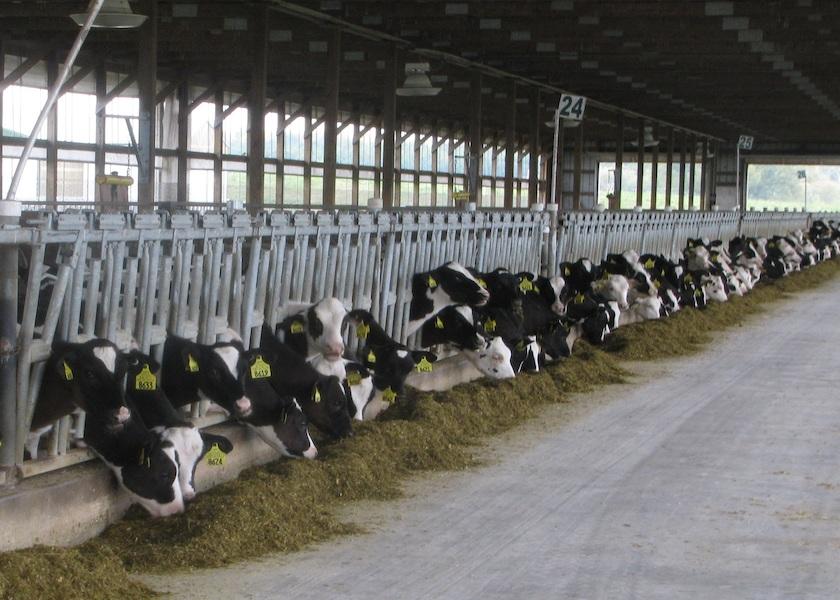Tips to Determine the Right Number of Replacement Heifers for Your Dairy

When the feed truck pulls into the driveway and soon after another feed bill awaits to be paid, a producer might begin to question the number of head they are feeding. This certainly holds true with youngstock, which is why it is essential to calculate the right number of replacement heifers for your dairy that will fill your future pipeline.
David Erf, dairy technical services geneticist with Zoetis, says most dairies are raising more heifers than they need.
“This is not always obvious to dairy producers,” he says. “Some have gone through a period of high heifer inventory numbers and have gotten used to the high turnover rates that come with an inventory that is too high for their operation.”
Raising too many heifers can be costly for producers, which is why Erf recommends having a management plan for heifer inventory and reminds producers to check their cattle inventory numbers as much as they do milk prices.
The Heifer Formula
According to Erf, there are four major factors that a producer must know to determine the right number of heifers for their herd.
- What is the herd size we need to support? Producers must remember to include both milking and dry cows in this count.
- What is the current herd turnover rate? When obtaining this information, we have to look at where we think that rate will realistically be in the future, not always where we are currently. I have had herds that were heifer heavy and inflated their turnover rate – we had to aim for a lower target. On the other hand, I have had herds coming off an expansion that kept turnover rates low on purpose. In those cases, we aim for a rate that is higher than where they were.
- What is the average age at first calving? If a herd moves animals through their rearing program quicker, they need fewer heifers. For example, lowering the age at first calving from 25 months to 24 months means about 4% less heifers are needed.
- What are the current heifer mortality expectations? We hope all heifer calves born can enter the milking string. Reality tells us otherwise. Pneumonia, scours, injuries and non-breeding heifers add up and we need to understand the level of mortality in our heifers to understand how much inventory is needed.
On the flip side, Trevor Slegers with Ever.Ag suggests that some dairies are underestimating their future needs and therefore are not raising enough heifers.
“Not having enough replacements forces dairies to milk underperforming cows longer,” he says.
In today’s dairy replacement landscape, knowing the target number of heifers is vital before breeding. Erf underscores that having too many heifers is not profitable.
“Especially as the market does not offer an impressive price about rearing costs to sell young dairy calves,” he says. “With the value of dairy beef calves nowadays, creating too many heifers with no breeding strategy is a lost opportunity for income of dairy beef calf sales. Producers absolutely need to know these details before calling the AI company.”
Although, Erf cautions producers that having few heifers on hand and needing to purchase cattle can lead to poor-quality genetics and biosecurity concerns.
“This is why having a plan for heifer inventory management is crucial. You need to make sure that you have the right number of heifers for optimal profitability, but also that the heifers you are breeding are the right ones and provide the herd you wish to see in the future,” he says.
Target Numbers
To figure the target number of heifers needed each month, Slegers says it is important to know how many sexed breedings it will take to achieve your goal, considering current conception numbers.
“It’s useful to know which cows you should be breeding sexed to and which cows to be breeding beef to—which is where a tool like genomics comes into play,” he says.
According to Erf, the temptation to cut back on management costs due to low milk prices by testing out genomics is strong amongst producers.
“If you don’t survive today, why prepare for tomorrow?” he asks. “The good news is that genomic testing helps us do both of those things. Genomic testing helps producers accelerate genetic progress and improves productivity and profitability through better genetics. Those that take a break from testing can find themselves falling behind and struggle with areas like inventory management as they don’t have accurate animal rankings and tend to breed even more heifers. These herds have a hard time catching up and fall behind on their genetic progress.”
Slegers encourages producers to monitor heifer replacement numbers by asking this one question. “Would I keep this cow if I had a replacement ready to take her place?” He echoes Erfs’ sentiments about genomic testing, adding that it is a tool not only to help make breeding decisions, but also to help with culling.
“If you need to sell heifers, you need accurate information to make an informed business decision. Genomic testing data can help answer questions like – is she worth keeping?” he says.







